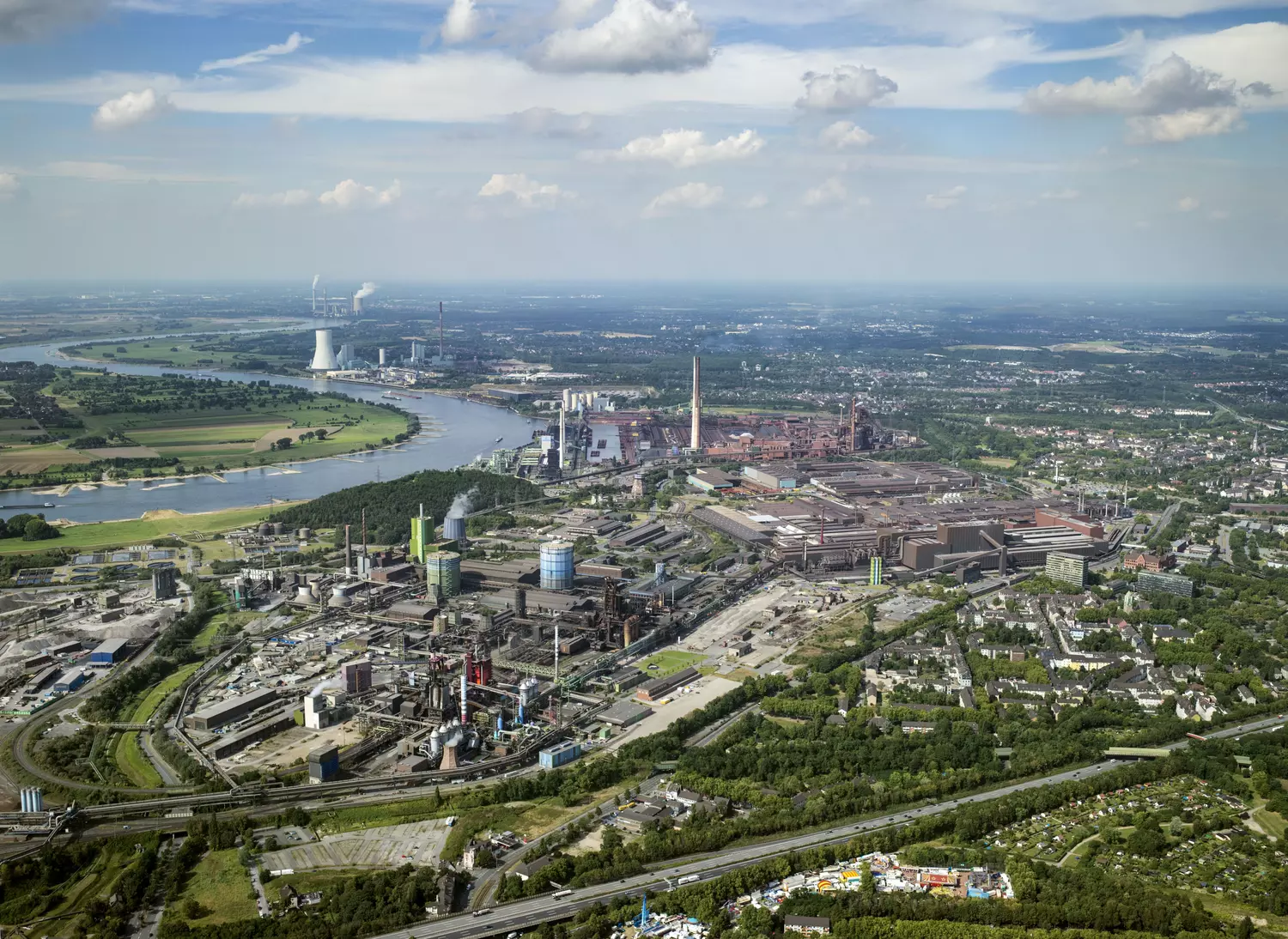The first step for high-quality steel!
Ironmaking is the first step in the steel production process, converting iron ore into molten iron. This upstream phase is pivotal when it comes to shaping a sustainable metals industry, since it accounts for approximately 70% of the industry's carbon emissions. With each ton of crude steel, the reduction of iron ore to iron causes 1.85 tons of CO2. Our cutting-edge solutions aim to revolutionize ironmaking, significantly reducing environmental impact while enhancing efficiency and sustainability.
Plants
Technology highlights in ironmaking
-
Top charging
Top charging in ironmaking is revolutionized by our Paul Wurth Bell Less Top (BLT) technology, which enhances the efficiency and environmental performance of blast furnaces. The Paul Wurth BLT system precisely controls the distribution of raw materials like coke and sinter, ensuring optimal burden distribution and reducing fuel consumption. This innovative technology leads to significant CO2 emission reductions, improved productivity, and lower operating costs by supporting higher Pulverized Coal Injection (PCI) rates and minimizing coke usage. By integrating advanced process know-how and mathematical modeling, the Paul Wurth BLT system sets new standards in sustainable ironmaking, making it a game-changer in the industry.
-
Slag granulation
Value-added products from blast furnace slag
The Paul Wurth INBA slag granulation system is an advanced technology designed to transform slag into a valuable product for the cement industry. This process involves granulating the slag using water, followed by dewatering with the dynamic INBA dewatering drum. The system is highly flexible and compact, allowing it to be integrated seamlessly into various plant configurations.
Key benefits of the INBA system include reduced emissions and improved environmental control. Additionally, the system is recognized as a Best Available Technology due to its efficiency in processing slag and producing high-quality granulated blast furnace slag, which serves as a CO2-friendly substitute for clinker in cement production
![]()
-
Injection technologies
Pulverized Coal Injection (PCI) and Coke Oven Gas (COG) Injection are cutting-edge technologies that significantly enhance the efficiency and sustainability of blast furnace operations in ironmaking.
Pulverized Coal Injection (PCI) involves injecting finely ground coal directly into the blast furnace, reducing the need for coke and thereby lowering production costs and CO2 emissions. This technology allows for high injection levels, improving the combustion process within the furnace and enhancing overall productivity and fuel efficiency. Paul Wurth advanced PCI systems, operational in over 80 blast furnaces globally, exemplify the effectiveness of this approach, offering reliable, cost-effective, and environmentally friendly solutions.
Coke Oven Gas (COG) Injection utilizes by-product gases from coke production as a supplementary fuel in blast furnaces. By injecting COG, the reliance on conventional fuels like coke and coal is reduced, further cutting carbon emissions. This method not only recycles waste gases but also integrates seamlessly into existing furnace operations, offering a quick and efficient route to lower CO2 footprints in ironmaking.
![]()
SMS group email service
Our promise to you: this is not just another newsletter!
Use our contact form for questions, inquiries or personal contact.



